
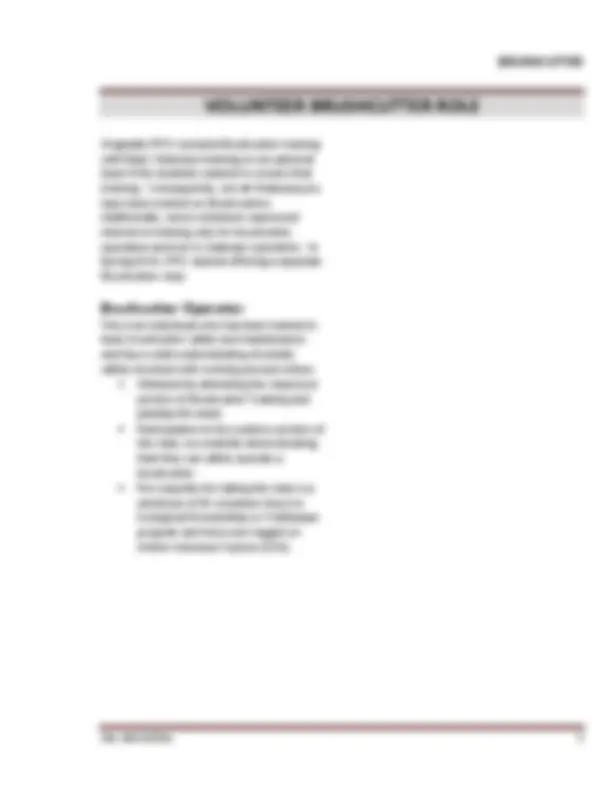
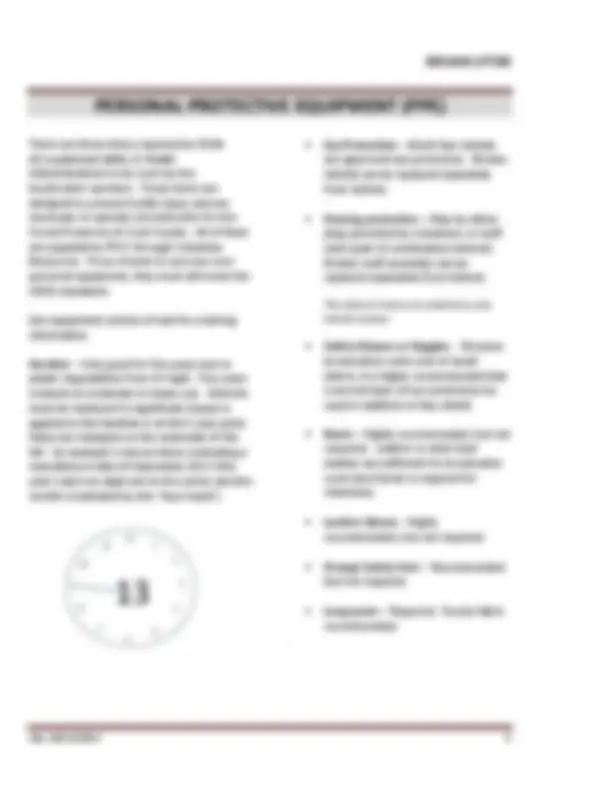
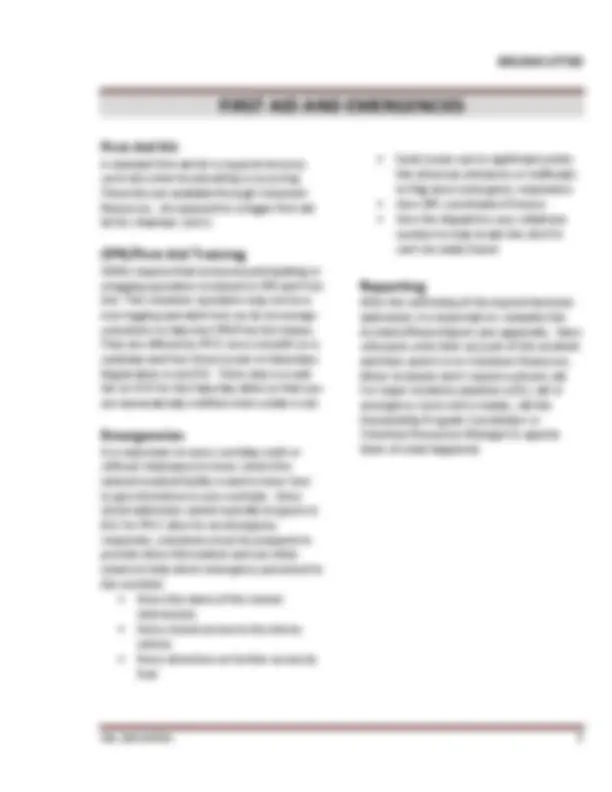
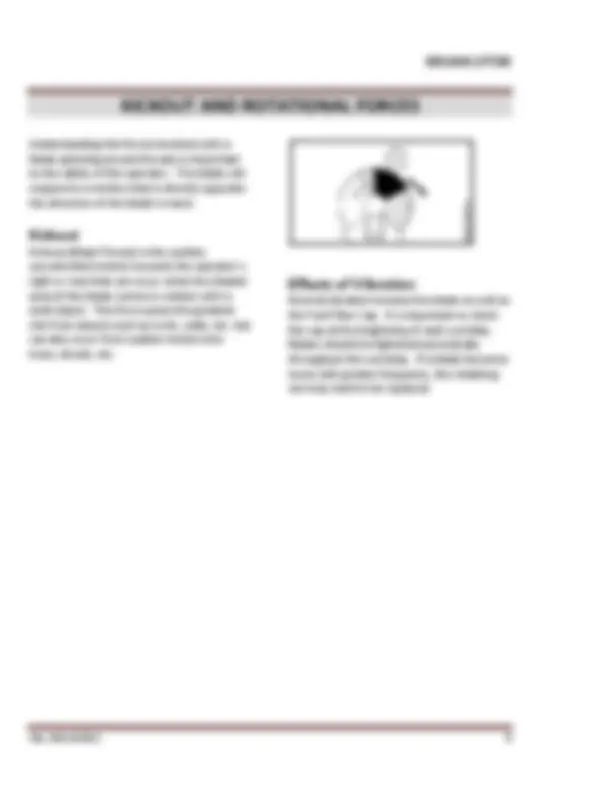
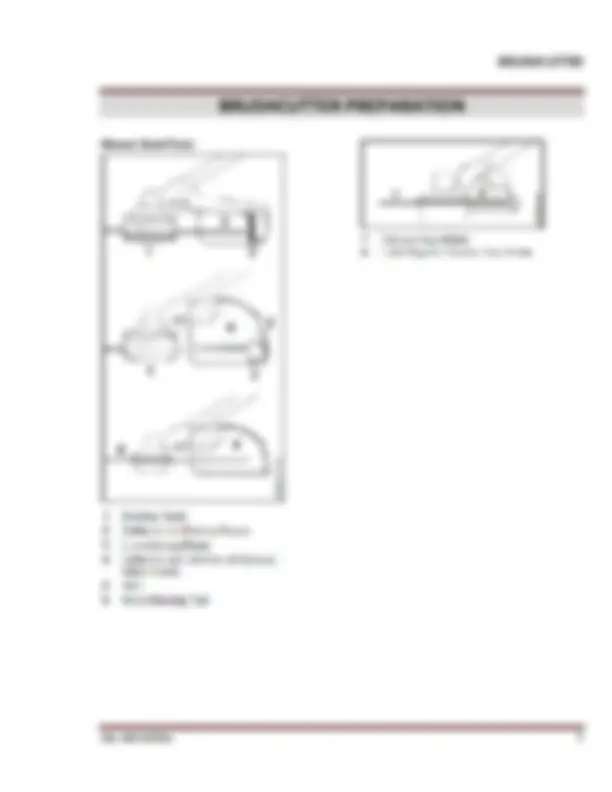
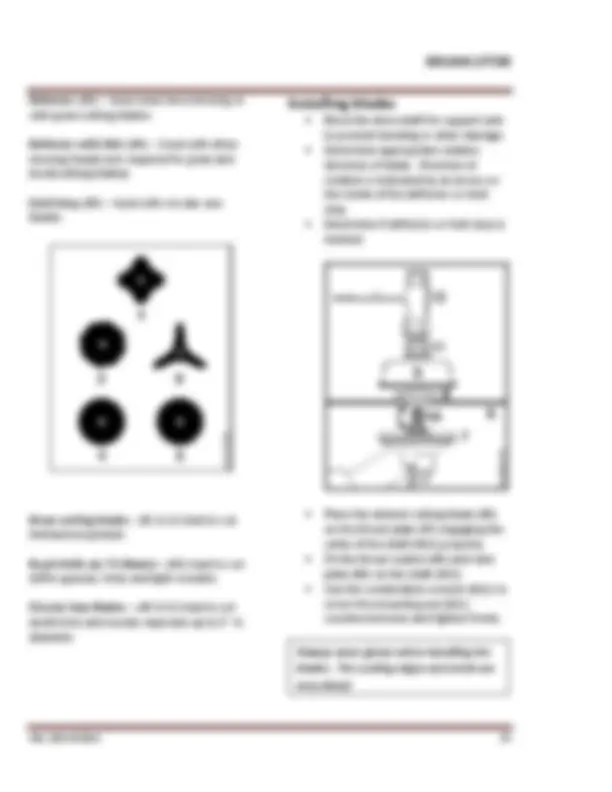
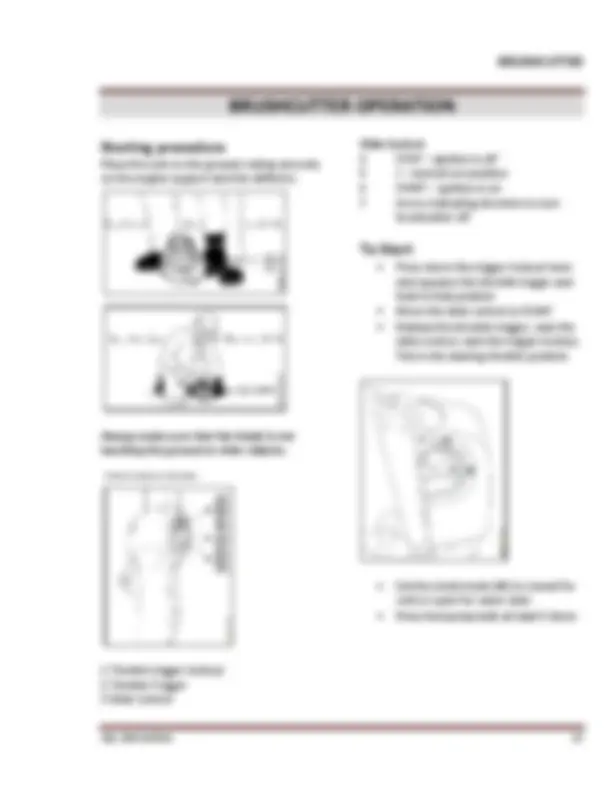
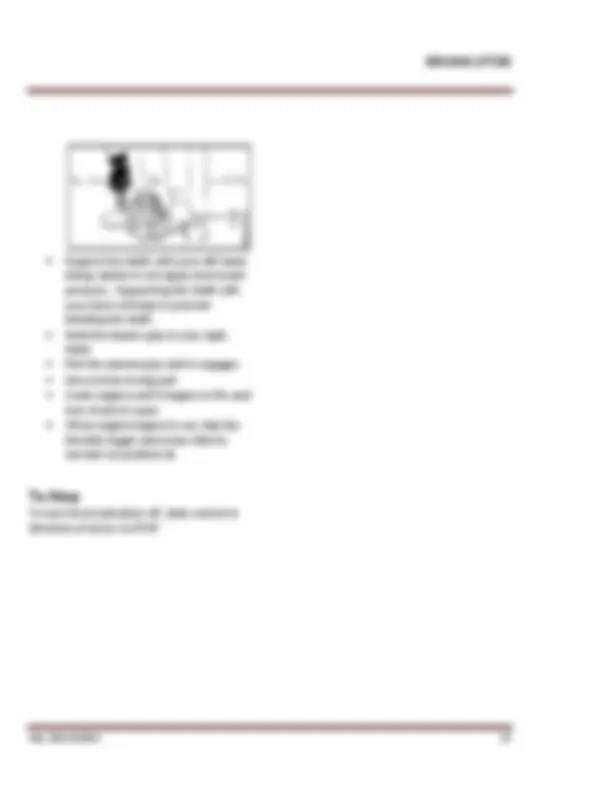
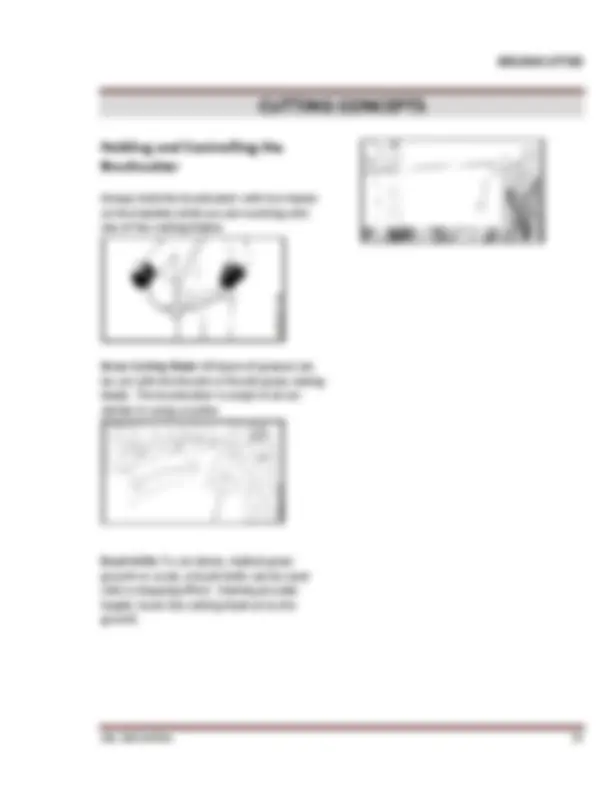

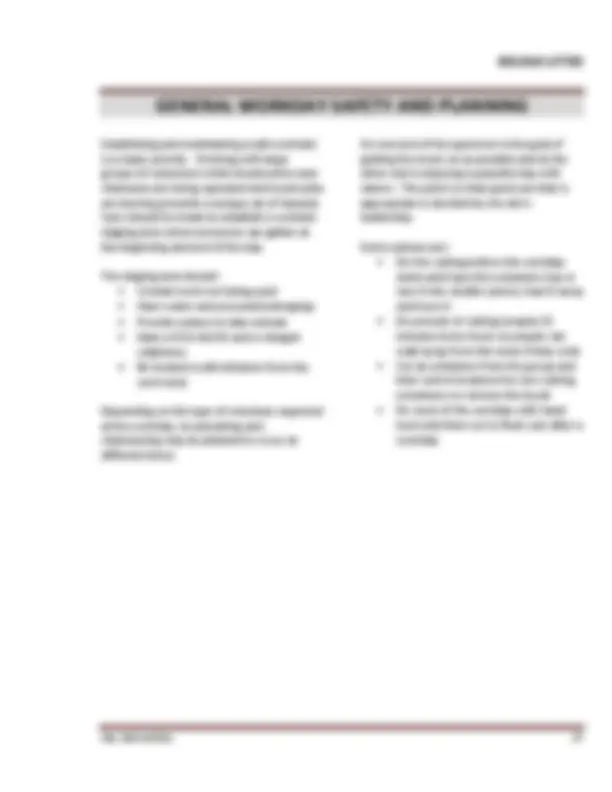
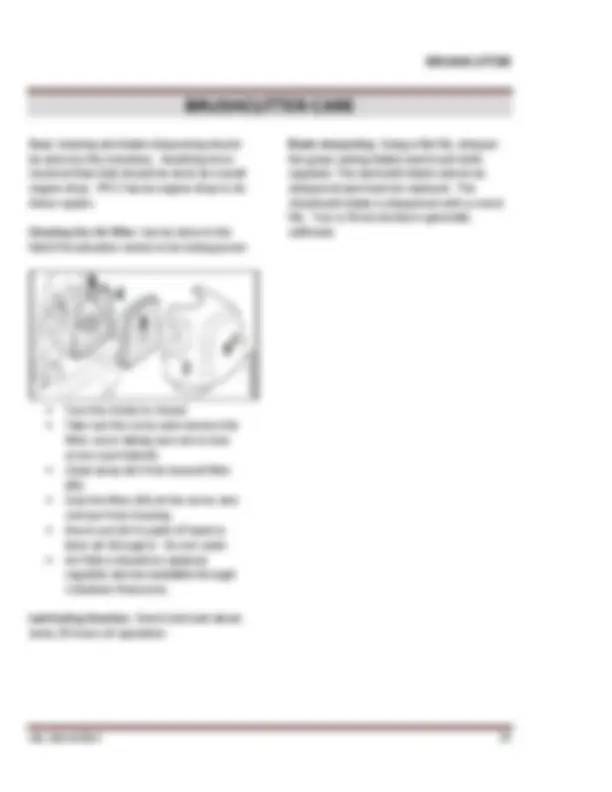
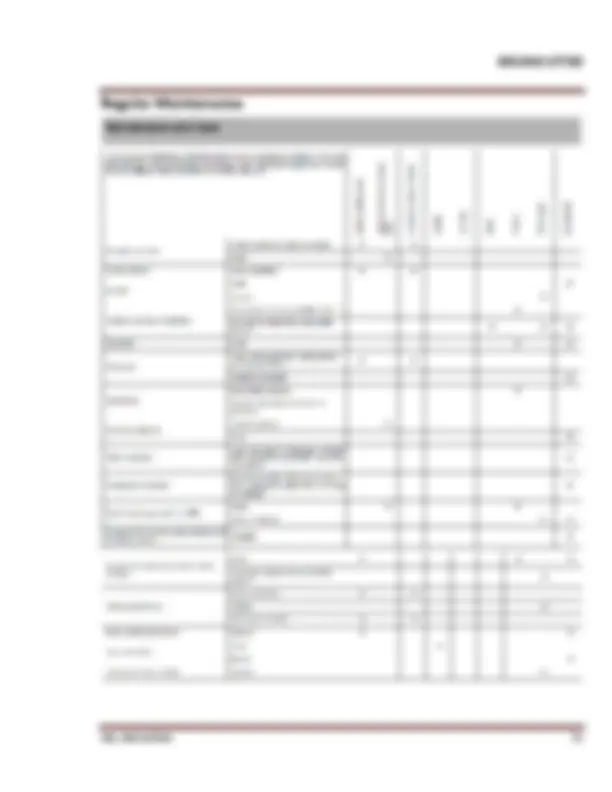
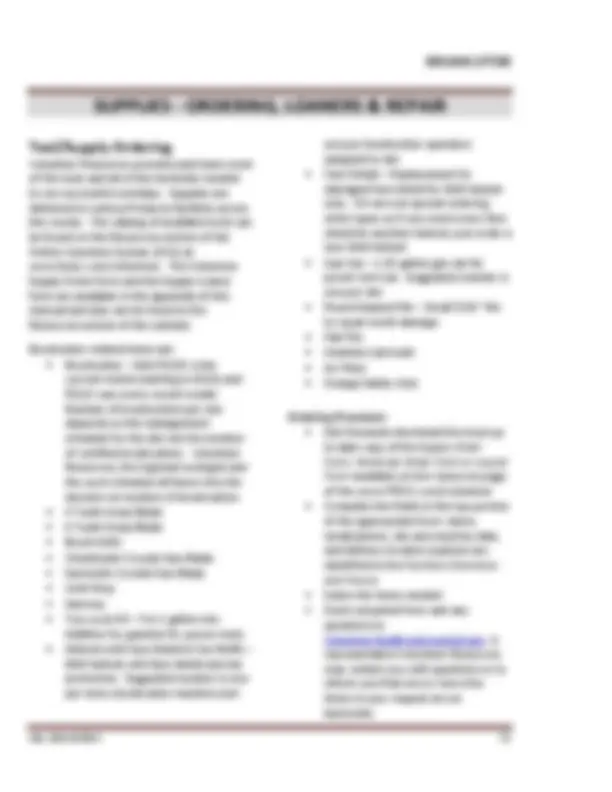


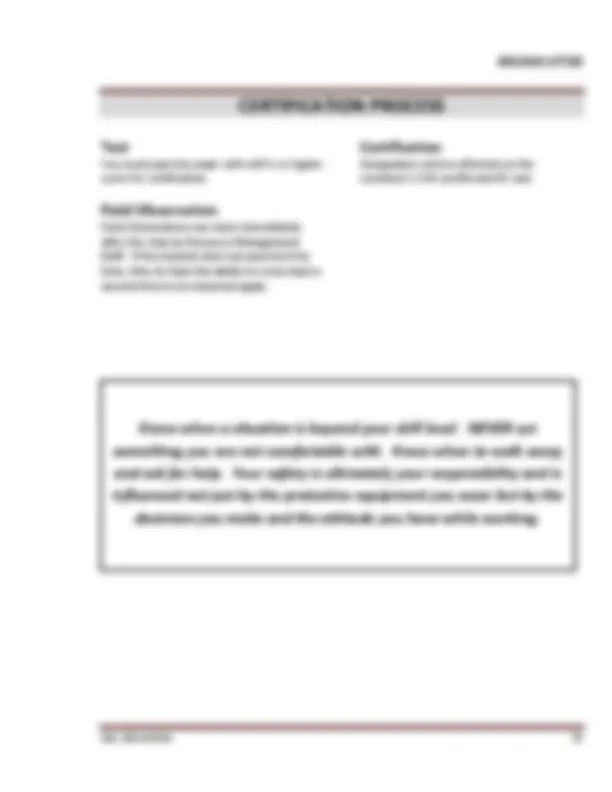
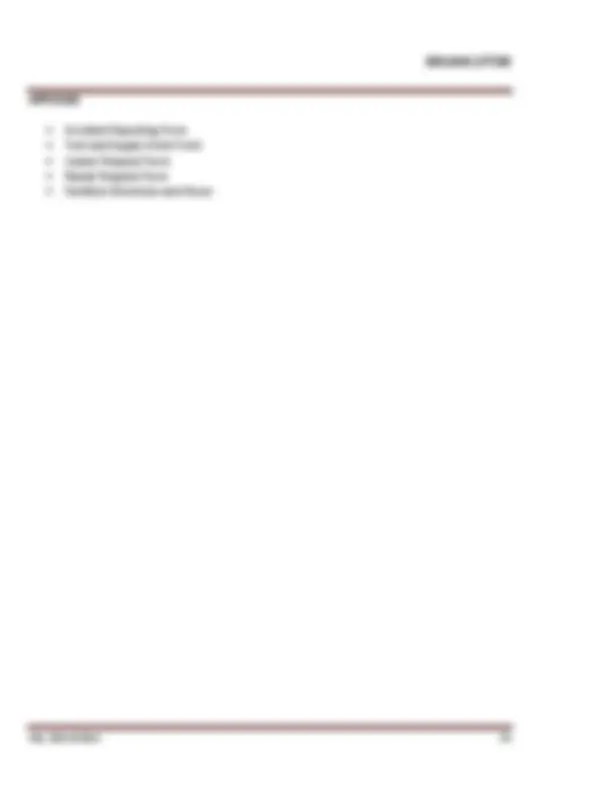


Study with the several resources on Docsity

Earn points by helping other students or get them with a premium plan


Prepare for your exams
Study with the several resources on Docsity

Earn points to download
Earn points by helping other students or get them with a premium plan
Community
Ask the community for help and clear up your study doubts
Discover the best universities in your country according to Docsity users
Free resources
Download our free guides on studying techniques, anxiety management strategies, and thesis advice from Docsity tutors
A brushcutter is a line trimmer fitted with one of several different cutting heads. Smaller, lightweight trimmers cannot be used as brush cutters.
Typology: Assignments
1 / 26

This page cannot be seen from the preview
Don't miss anything!



















May, 2014 edition
Introduction 2
Training Objectives Brushcutter Role 3
Personal Protective Equipment (PPE) 4
First Aid and Emergencies 5
Mechanics of Brushcutter Safety 6
Kickout and Rotational Forces 8
Brushcutter Preparation 9
Installing Blades Adjusting the Harness Fueling/Oiling Procedure Brushcutter Operation 12
Starting Procedure Cutting Concepts 14 Holding and Controlling Work Site Hazard Assessment and Safety 16
Operator Safety Site Hazards Safety of Other Volunteers and Public General Workday Safety and Planning 17
Holding and Controlling Brushcutter Care 18
Supplies 20
Ordering Loaner Repair Certification 22
Appendix 23
Illness/Accident Reporting Repair Request Form Tool/Supply Order Form Loaner Request Form Delivery Locations
A brushcutter is a line trimmer fitted with one of several different cutting heads. Smaller, lightweight trimmers cannot be used as brush cutters. High powered trimmers can be equipped with a cutting head that can clear small trees and saplings and is then called a clearing saw. The trimmer that is issued in the FPCC volunteer program is in the medium weight and power range and can be equipped as a brushcutter and can be used to clear trees up to about 2” in diameter. Although brushcutters are safer to use than chainsaws, when used improperly by an unskilled operator there is an increased risk of personal injury.
Develop a strong understanding of the fundamentals of safe brushcutter use and maintenance and jobsite safety.
and operation to help an operator become a competent, safe and professional brushcutter.
All of the maintenance and operation information contained in this manual can also be found in the STIHL user manual, which can be a valuable reference tool. Proficiency with a brushcutter will come with experience. However, it is important to always stay focused and never become complacent while operating a brushcutter.
There are three items required by OSHA (Occupational Safety & Health Administration) to be worn by the brushcutter operator. These items are designed to prevent bodily injury and are necessary to operate a brushcutter for the Forest Preserves of Cook County. All of them are supplied by FPCC through Volunteer Resources. If you choose to use your own personal equipment, they must still meet the OSHA standards.
See equipment section of text for ordering information.
Hardhat – Only good for five years due to plastic degradation from UV light. Five years is based on moderate to heavy use. Helmets must be replaced if a significant impact is applied to the hardhat or at the 5 year point. Dates are stamped on the underside of the bill. An example is shown below indicating a manufacture date of September 2013 (the year’s last two digits are in the center and the month is indicated by the “hour hand”).
Eye Protection – Mesh face shields are approved eye protection. Broken shields can be replaced separately from helmet.
Hearing protection – May be either plug (provided by volunteer) or muff style (part of combination helmet). Broken muff assembly can be replaced separately from helmet.
The above 3 items are ordered as one helmet system.
Safety Glasses or Goggles - Because brushcutters emit a lot of small debris, it is highly recommended that a second layer of eye protection be used in addition to face shield.
Boots – Highly recommended, but not required. Leather or steel toed leather are sufficient for brushcutter work (but Kevlar is required for chainsaw).
Leather Gloves - Highly recommended, but not required.
Orange Safety Vest – Recommended but not required.
Long pants – Required. Sturdy fabric recommended. .
A standard first aid kit is required at every work site when brushcutting is occurring. These kits are available through Volunteer Resources. (As opposed to a logger first aid kit for chainsaw work.)
OSHA requires that everyone participating in a logging operation is trained in CPR and First Aid. The volunteer operation may not be a true logging operation but we do encourage volunteers to take the CPR/First Aid classes. They are offered by FPCC once a month on a weekday and four times a year on Saturdays. Registration is via OVS. There also is a wait list on OVS for the Saturday dates so that you are automatically notified when a date is set.
It is important on every workday (with or without chainsaws) to know where the nearest medical facility is and to know how to give directions to your worksite. Since street addresses cannot typically be given to 911 for FPCC sites for an emergency responder, volunteers must be prepared to provide other information and use other means to help direct emergency personnel to the worksite. Know the name of the closest intersection Know closest access to the site by vehicle Know directions on further access by foot
Send scouts out to significant points like driveway entrances or trailheads to flag down emergency responders Give GPS coordinates if known Give the dispatcher your cellphone number to help locate the site if it can’t be easily found
After the well-being of the injured has been addressed, it is important to complete the Accident/Illness Report (see appendix). Have witnesses write their account of the accident and then send it in to Volunteer Resources. Minor incidents don’t require a phone call. For major incidents (anytime a 911 call or emergency room visit is made), call the Stewardship Program Coordinator or Volunteer Resources Manager to apprise them of what happened.
Throttle Trigger Lockout - (#9) This device must be depressed in order to allow the throttle to function. Test this feature, with the brushcutter NOT running, by attempting to pull the throttle without depressing the throttle trigger lockout. The throttle should not be able to move if the lockout is functioning properly.
Bike Handle – (#6) This style handle must be used for brushcutting as opposed to a loop handle which is used for line trimming. Brushcutting requires that both hands be used during operation as opposed to one hand use for trimming. The bike handle is attached via a Wing Screw (#18) and Handle Support (#17).
Carrying Ring – (#10) Connects the brushcutter to the shoulder strap or harness. The ring can be adjusted to match the height needed to cut the particular specimen with the appropriate blade (grass blades and knives adjusted to ground level; circular saw blades to approximately 2- 8” above ground).
Shoulder Strap – A single shoulder strap comes with the Brushcutter and can be used if line trimming.
Harness – A harness is supplied separately by FPCC so that the operator has both hands free to operate the brushcutter.
Machine Support – (#16) To safely rest machine on the ground. Since motor is hot, it is important not to rest it directly on dry grass, which could start a fire.
Barrier Bar – (#20) Helps keep the operator’s feet and legs clear of the cutting tool.
Muffler – (#5) The muffler functions to reduce the noise output and contains a spark arrestor screen. The screen prevents sparks from exiting the muffler, reducing the potential for ignition of vegetation near the work site.
Slide Control - (#8) - This is the off switch and is intended to easily be operated by the thumb of your right hand.
Understanding the forces involved with a blade spinning around the axis is important to the safety of the operator. The blade will respond in a motion that is directly opposite the direction of the blade’s travel.
Kickout (Blade Thrust) is the sudden, uncontrolled motion towards the operator’s right or rear that can occur when the shaded area of the blade comes in contact with a solid object. This force poses the greatest risk from objects such as rocks, walls, etc. but can also occur from sudden motion into trees, shrubs, etc.
Normal vibration loosens the blade as well as the Fuel Filter Cap. It is important to check the cap at the beginning of each workday. Blades should be tightened periodically throughout the workday. If a blade becomes loose with greater frequency, the retaining nut may need to be replaced.
Always wear gloves when handling the blades. The cutting edges and teeth are very sharp!
Deflector (#2) – Used when line trimming or with grass cutting blades
Deflector with Skirt (#4) – Used with other mowing heads (not required for grass and brushcutting blades)
Limit Stop (#8) – Used with circular saw blades
Grass cutting blades - (#1 & 2) Used to cut herbaceous grasses
Brush Knife (or Tri-Blade) – (#3) Used to cut stiffer grasses, forbs and light woodies
Circular Saw Blades – (#4 & 5) Used to cut small trees and woody resprouts up to 2” in diameter
Block the drive shaft for support and to prevent bending or other damage. Determine appropriate rotation direction of blade. Direction of rotation is indicated by an arrow on the inside of the deflector or limit stop. Determine if deflector or limit stop is needed.
Place the desired cutting blade (#6) on the thrust plate (#7) engaging the collar of the shaft (#10) properly. Fit the thrust washer (#8) and rider plate (#9) on the shaft (#10). Use the combination wrench (#12) to screw the mounting nut (#11) counterclockwise and tighten firmly.
Grass Cutting blade (4 tooth) Rotation direction doesn’t matter Deflector without skirt No limit stop Grass Cutting blade (8 tooth) Cutting edge must point clockwise Deflector without skirt No limit stop Brush Knife Rotation direction doesn’t matter Deflector without skirt No limit stop Circular Saw Blades (both styles) Cutting edge must point clockwise No deflector Must have limit stop Only sawtooth can be hand sharpened
The brushcutter should be adjusted based on the type of blade and the best position for the target specimen.
Place the unit on the ground resting securely on the engine support and the deflector.
Always make sure that the blade is not touching the ground or other objects.
1 Throttle trigger lockout 2 Throttle Trigger 3 Slide Control
Slide Control 4 STOP – ignition is off 5 I – normal run position 6 START – ignition is on 7 Arrow indicating direction to turn brushcutter off
Press down the trigger lockout lever and squeeze the throttle trigger and hold in that position Move the slide control to START Release the throttle trigger, next the slide control, next the trigger lockout. This is the starting throttle position.
Set the choke knob (#8) to closed for cold or open for warm start Press fuel pump bulb at least 5 times
Support the shaft with your left hand being careful to not apply downward pressure. Supporting the shaft with your boot will help to prevent bending the shaft. Hold the starter grip in your right hand Pull the started grip until it engages Give a brisk strong pull Crank engine until it begins to fire and turn choke to open When engine begins to run, blip the throttle trigger and move slide to normal run position ( I )
To turn the brushcutter off, slide control in direction of arrow to STOP
Both Grass blades and brush knives should be held in a floating position just touching the ground.
Circular Saw Blade To cut small trees (up to 2” diameter) and woody resprouts, a circular saw blade can be used. Although larger trees can be cut, it increases the risk of the blade catching or binding and could result in injury. Larger trees are best cut by chainsaw.
The limit stop should be used to allow the cutting head to be held against the tree being cut. Before starting the cut, accelerate up to full throttle and apply the blade to the right side of the tree.
Circular saw blades should hover 2-8” above the ground.
Establishing and maintaining a safe worksite is a major priority. Working with large groups of volunteers while brushcutters and chainsaws are being operated and brush piles are burning presents a unique set of hazards. Care should be made to establish a worksite staging area where everyone can gather at the beginning and end of the day.
The staging area should: Contain tools not being used Have water and personal belongings Provide a place to take a break Have a First Aid Kit and a charged cellphone. Be located a safe distance from the work area
Depending on the type of volunteer expected at the workday, brushcutting and chainsawing may be planned to occur at different times.
On one end of the spectrum is the goal of getting the most cut as possible and at the other end is enjoying a peaceful day with nature. The point on that spectrum that is appropriate is decided by the site’s leadership.
Some options are: Do the cutting before the workday starts and have the volunteers lop or saw it into smaller pieces, haul it away and burn it Do periods of cutting (maybe 15 minutes every hour) so people can walk away from the noise if they wish Cut at a distance from the group and then switch locations for non cutting volunteers to remove the brush Do most of the workday with hand tools and then cut to flush cuts after a workday
Basic cleaning and blade sharpening should be done by the volunteer. Anything more involved than that should be done at a small engine shop. FPCC has an engine shop to do these repairs.
Cleaning the Air Filter Can be done in the field if brushcutter seems to be losing power.
Turn the choke to closed Take out the screw and remove the filter cover taking care not to lose screw (use helmet) Clean away dirt from around filter (#3) Grip the filter (#3) at the arrow and remove from housing Knock out dirt in palm of hand or blow air through it. Do not wash. Air Filters should be replaced regularly and are available through Volunteer Resources.
Lubricating Gearbox Check lubricant about every 25 hours of operation.
Blade sharpening Using a flat file, sharpen the grass cutting blades and brush knife regularly. The sawtooth blade cannot be sharpened and must be replaced. The chiseltooth blade is sharpened with a round file. Two or three strokes is generally sufficient.